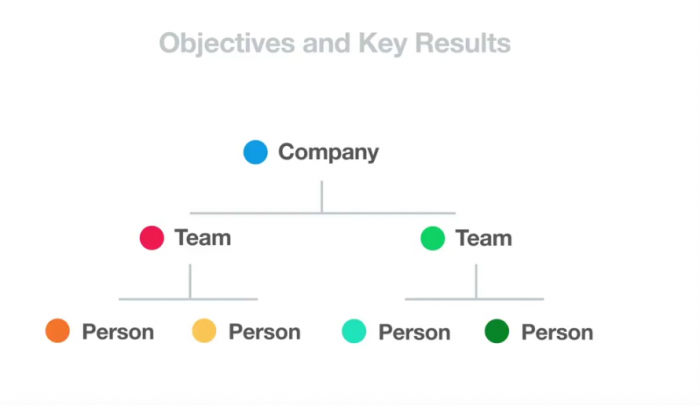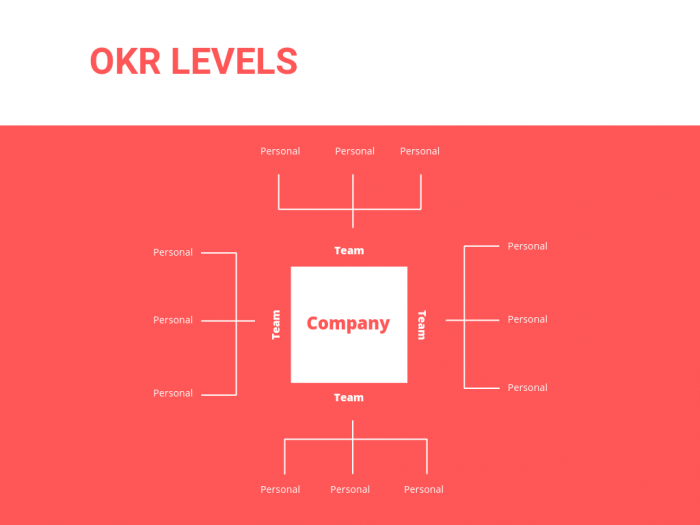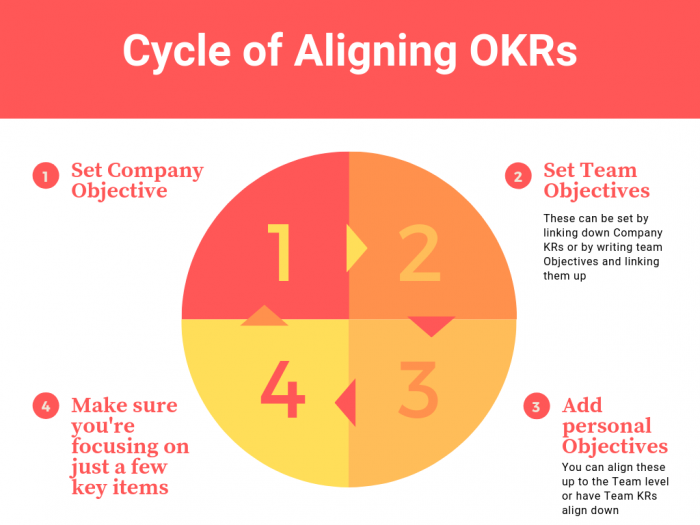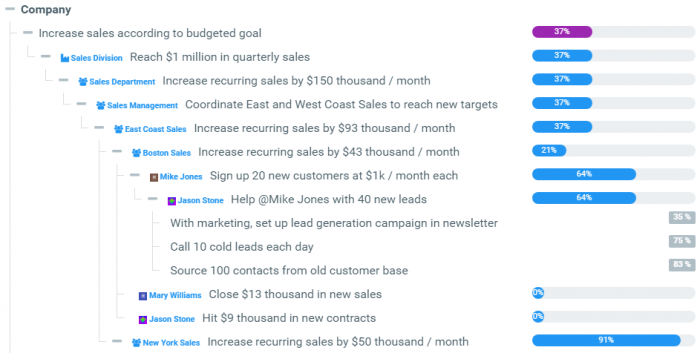Having OKR alignment is absolutely necessary in order to have OKR success. That being said, aligning OKRs is one of the most difficult portions of OKRs to understand. To exemplify this, even OKR Dream Daddy John Doerr doesn’t really expand on alignment besides that “you should do it.” So, what does alignment do for you and your team?
The big purpose of aligning your OKRs is to unify your company at every level. The objective is for everyone to truly understand what’s going on and how everyone can contribute to the company’s largest goals. We’re going to quickly address the basics of alignment. This includes finding an alignment style that works for you and your company.

If you came here with only a little OKR knowledge, it’s probably useful to touch on exactly what OKRs are again so you can use them in your OKR alignment strategy.
OKR alignment
OKRs are a goal-setting strategy. The “O” stands for your “Objectives.” These are your big, aspirational goals. The KR, then, stands for Key Results. Key Results are the measurable outcomes that show you the progress you’ve made towards accomplishing your Objectives. There are also your weekly Plans. These also help drive forward your larger Objectives but consist of the tasks and projects you accomplish on a weekly basis.

OKR levels

Before you start coming up with those great OKRs of yours, you should really hone in on the structure of the OKR alignment you want to create. OKRs can be set at 4 levels. These consist of Company, Department, Team, and Personal. When you are just getting started out, you can keep things simple by focusing on just the Company and Team levels. Later, you can introduce Personal OKRs when everyone is comfortable with the methodology and sort of know what they’re doing. Larger companies may benefit from the additional Department Level. These define priorities for a group of teams. However, you really only need to use this level when you have a large company with a ton of teams.
Aligning, Cascading, Linking
As we said already, the purpose of alignment is to unify the goals of your company.
However, you probably have heard a lot of terms that serve the same purpose. The two biggest you’ve probably seen thrown around are linking and cascading. So, what’s the difference? How is creating a structure of OKR alignment different?
Cascading only focuses on a top-down approach. It’s related to traditional forms of management. Linking connects to alignment but is the actual process of directly connecting Objectives at different levels.
Linking can be used in the OKR alignment process but isn’t necessary to have alignment. Likewise, cascading goals are a form of alignment, but not the only one.
Basic OKR Alignment Structures
Aligning your company can happen two ways, from two different directions: Top-down and bottom-up. Top-down is when Objectives are assigned by high-level leaders and executives downwards. On the other hand, bottom-up is where employees are asked to come up with their own suggestions for the next quarter’s activities.
How to do it?
We recommend being versatile and doing a little of both for your OKR alignment. We do it like this:
First, higher-level management or the CEO of your company outlines the company OKRs for that quarter. From there, team managers should be asked to come up with their own team goals based on how they plan to contribute to the company Objective. Then, team managers can discuss with their team members and decide on Personal Objectives. If you want to use those. From there, you can then discuss goals at every level. And you can include everyone’s voices on them.
When in this beginning stage of coming up with your OKRs, it’s important to remember to focus. Limit yourself to 1-3 Objectives and 3-5 Key Results at each level.

OKR Alignment Example
So, let’s go through an alignment example to give you a better idea of how it looks. Keep in mind, again, that alignment is a soft concept, and if you need a hard tutorial on how to link your goals together, then you should look at linking.
The beginning of the quarter should start with the higher management coming up with the goals that she would like to set for the quarter. Let’s say the company’s big goals are to increase revenue and improve the quality of the staff. If they and their other highest staff members have a clear idea of how they would like to achieve those goals, then they can come up with their own Key Results. From there, they can assign those KRs as Objectives for each team using a traditional top-down (or cascading) approach.
However, in this case, it’d be really nice if the teams got a say in the direction management went with their big goals. They work closer to the clientele and lower levels, and therefore, have more explicit experience with the day-to-day changes necessary to make larger goals happen.
So, instead, higher management would meet with the team leads to tell them the direction they want to take the company in.
Let’s say we have two teams in this particular example: marketing and HR.
Those or team leaders would then plan out how they can contribute to the two company goals.
In this case, the marketing team comes up with a way to increase revenue by offering special summer packages for a limited time. The HR team, on the other hand, will hire 2 new staff members.
From there, the team leaders meet with the individuals below them and discuss both the company and team goals, where they can provide any feedback they feel needs to be delivered.
OKR Examples
Here are some examples from the marketing side of Objectives:
- Promote and distribute summer package event deal on all social media networks.
- Create a video advertisement promotion for YouTube.
While here are some for HR:
- Interview the top 5 candidates for the new positions
- Read through all application submissions to find the most suitable candidates
After these goals are set, everyone can add additional goals, eliminate goals they feel are not beneficial and tweak goals they already have.
OKR alignment helps your company accomplish larger goals. By letting everyone see the smaller parts that drive them, everyone can gain a better understanding of what the company vision is and how they contribute to it.
Not to mention, aligning Objectives helps people see what needs to be improved on all levels and encourages creative solutions to solve larger problems.

OKR alignment is an important part of the OKR process, so why not streamline it with Weekdone? Weekdone offers quick and easy automated linking so you can see how your OKRs align. And paid accounts get hands on OKR coaching to help have OKRs become a habit in your company. So sign up and try it out.